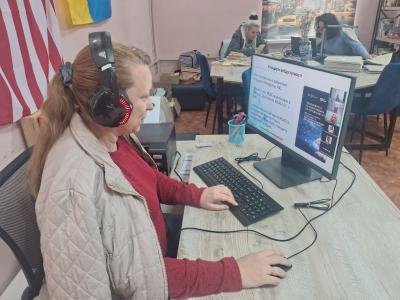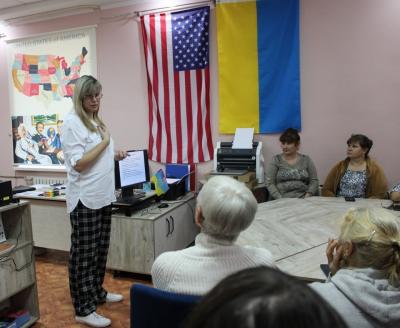Wilma Rudolph
Wilma Rudolph
1940-1994
It would be difficult to name another champion athlete who has had to overcome as many challenges as Wilma Rudolph. At her best, no one could outrun the "Black Gazelle", the media's nickname for Wilma.
But her story is not only about sprint records and Olympic Before Wilma could run, she had to learn to walk-and that did not come easily.
Wilma Rudolph was born prematurely to Blanche and Ed Rudolph onJune 23, 1940, in St. Bethlehem, Tennessee. She was the 20th of 22 children (including Ed’s 11 children by a previous marriage). By the time she was three years old, the frail child who had weighed less than 5 pounds (2.2 kg) at birth had already battled mumps, measles, and chicken pox.When she was 4 she contracted polio, double pneumonia, and scarlet fever, any of which could have been life threatening. Wilma survived, but her bout with polio left her with limited mobility in her left leg, and her doctors doubted that she would ever walk again. Blanche Rudolph thought otherwise, and told her daughter so. Wilma decided to believe her mother. Though the nearest therapy facility was 45 miles (72. km) away in Nashville, Blanche and Wilma rode the bus there every for Wilma’s whirlpool and massage treatments. Blanche and her other children also took turns massaging Wilma’s leg every day. At eight years old,Wdma was fitted with a metal brace attached to a special shoe that enabled her to her first steps. Before long, she was able to attend school. Seeing her classmates run and play made her even more determined to exercise her leg so that she could jein them. By the time Wilma was 11, she no longer needed the brace. One Sunday morning, she waited outside her church until everyone else had gone in then i took the brace off, left it on the steps, and slowly walked down the aisle to join her family. For the first time in her young life, she felt healthy. Wilma’s entry into competitive sports started at Burt School when she made the girls’ basketball team-but only because Coach Clinton Gray wanted Wilma’s older sisterYvonne on the team. Ed Rudolph had insisted that both his daughters would play or neither would be allowed.Wilma was already accustomed to hours of painful exercises, and she handled the long practice sessions without fatigue. She became an all-state player by the gut she was 15. Her speed and ability to “buzz” around the court earned her the nickname “Skeeter” (short for mosquito).
Wilma was even better in track events. Her legs, once thin and frail, were now long, muscular, and strong. During basketball ofllseasons, she won most of the informal track meets she competed in.The girl who couldn’t even walk six years earlier was now winning sprint events. During conference championship semifinals in Wilma’s sophomore year,
she met Ed Temple, the track coach at Tennessee State University (TSU) who was refereeing the playoffs. Temple had transformed TSU's women’s track team, the Tigerbelles, into one of the top teams in the United States.Although Burt High lost that playoff game, Temple later invited Wilma to participate in a summer athletic camp at Tennessee State. Temple believed in teaching mental toughness as well as running, breathing, and endurance techniques. He helped Wilma feel less intimidated by other track stars and concentrate on perfecting her own skills.The following year, she won the 75- and 100-yard dashes at the August AAU meets. She also anchored the winning relay team. But the most memorable moment of the meet for Wilma was being introduced to baseball great Jackie Robinson. The shy 16-year-old would always remember the advice he gave her that day: “You are a fascinating runner,” he said. “Don’t let anything or anybody keep you from running.”
In 1956, Wilma traveled to Seattle, Washington, for the Olympic trials. Fellow Tigerbelle Mae Faggs, an American record-holder and two-time Olympian, providedinvaluable guidance to her young teammate. At the qualifying heat of the‘200-meter dash, Faggs and Wilma crossed the tape simulta neously, both earning spots on the U.S. Olympic team that would compete in Melbourne,Australia. Once in Melbourne,Wilma discovered that most of the athletes were friendly, curious, and eager to exchange souvenirs with athletes from other countries. She was gratified to learn that for the first time she was being judged not by the color of her skin but by how fast she could run. Wilma made the semifinals of the 200-meter dash, but she finished third and did not advance the finals. A few days later, as part of the U.S. women’s 400-meter relay team, Wihna won a bronze medal when the team finished third behind the Australian and British teams. Inspired by the gold medal performances track star Betty Cuthbert, she vowed to compefe and win in the next Olympic Games.
In 1958, shortly after she graduated from high school, Wilma gave birth to a baby girl, Yalanda. Juggling the roles of single parent and athlete (she had earned a full athletic scholarship to TSU) was very difficult.The Rudolph family once again provided the support she needed by caring for Yolanda while Wilma attended classes and trained.
Wilma qualified for the U.S. women’s track team by winning both the 100 and 200-meter dashes.Three of her college teammates also made the team, and Ed Temple was named the U.S. Olympic track team coach. Wilma was running well enough to have a chance at three Olympic gold medals. But then, just days before the Games began, she twisted her ankle. Doctors were not sure she would be able to compete, but Wilma won the 100-meter dash easily, earning her first gold medal with a finishing time of 11.0 seconds. She also outran her competition in the 200-meter dash to win her second gold medal. In the 4 x 400-meter relay, Wilma fan the anchor leg, and although she bobbled the baton handoff, she recovered in time to reach the finish line three-tenths ahead of her competitors.The U.S. women's track team had set a new relay record. Wilma later reflected on her triple victory;
Three Olympic gold medals! I knew that was something nobody Could ever take away from me, ever.” She added that her favorite race was the relay, because she was joined on the medalists’ platform by her Tigerbelle teammates. Later in the day,Wilma spoke to the press. In her comments she pledged to use her physical talents to “the glory of God, the best interests of my nation, and the honor of womanhood.” Though the Klux Klan was still terrorizing blacks in the South, and attempting to sabotage the civil rights movement at every turn,Wilma received a hero’s ‘welcomegtwhen she returned to the United States. She was a hero-not a black heroflor a female hero, but a real American hero. President john Kennedy invitedWilma to the White House.The Associated Press (AP) named her Female Athlete of the Year. Wilma went back to school to finish work on her degree and she continued to compete through 1962. She was named the recipient of the Sullivan Award in 1961, and earned her second AP Athlete of theYear honor. She married Robert Eldridge in 1963.They had four children, but the marriage ended in 1976. Large endorsement contracts were rarely offered to athletes at that time, so Wilma chose a different route. She became a schoolteacher and coach in Tennessee and in 1977 wrote her autobiography, Wilma, which was later made into a television movie.
Perhaps Wilma’s greatest contribution, a lasting legacy of her desire to help others, was in establishing the Wilma Rudolph Foundation. Headquartered in Indianapolis, Indiana, the organization carries Wilma’s extraordinary vision of hope for the future of America’s children. The goal of the foundation is to motivate children from all walks of life through athletic participation.
In the summerof 1994,Wilma was diagnosed with brain cancer. That fall, the U.S. athletic community, and the world, lost one of the greatest athletes and humanitarian ambassadors to grace the twentieth century. On November 12, at the age of 54,Wilma Rudolph passed away, but the foundation that bears her name continues to carry on the work that she began.
More detailed information can be found in the "Extraordinary Women's Athlets" Judy L.Hasday, and issued by The Children's Press in the USA.
Information should be used just for educational purposes.











Comments